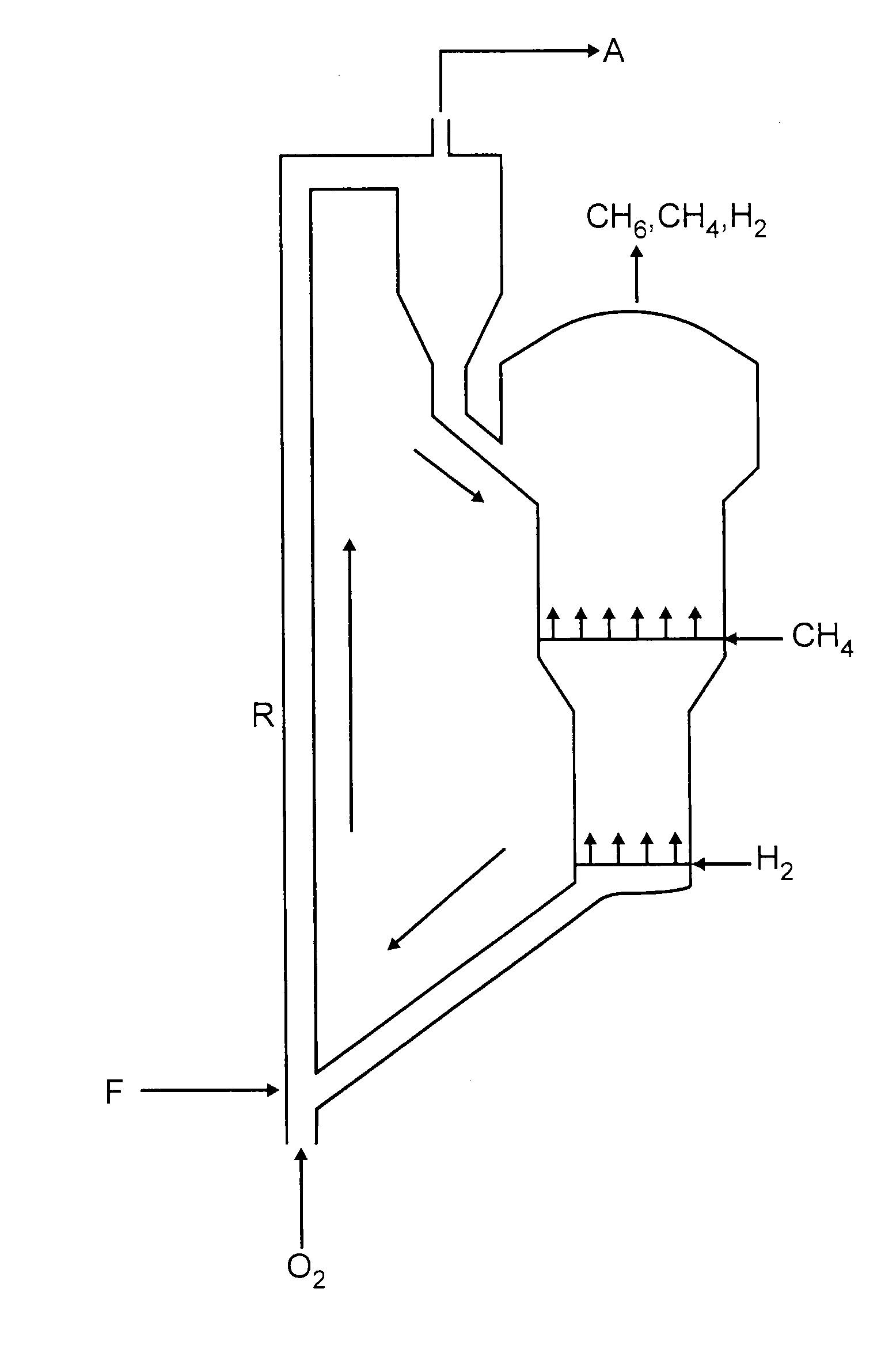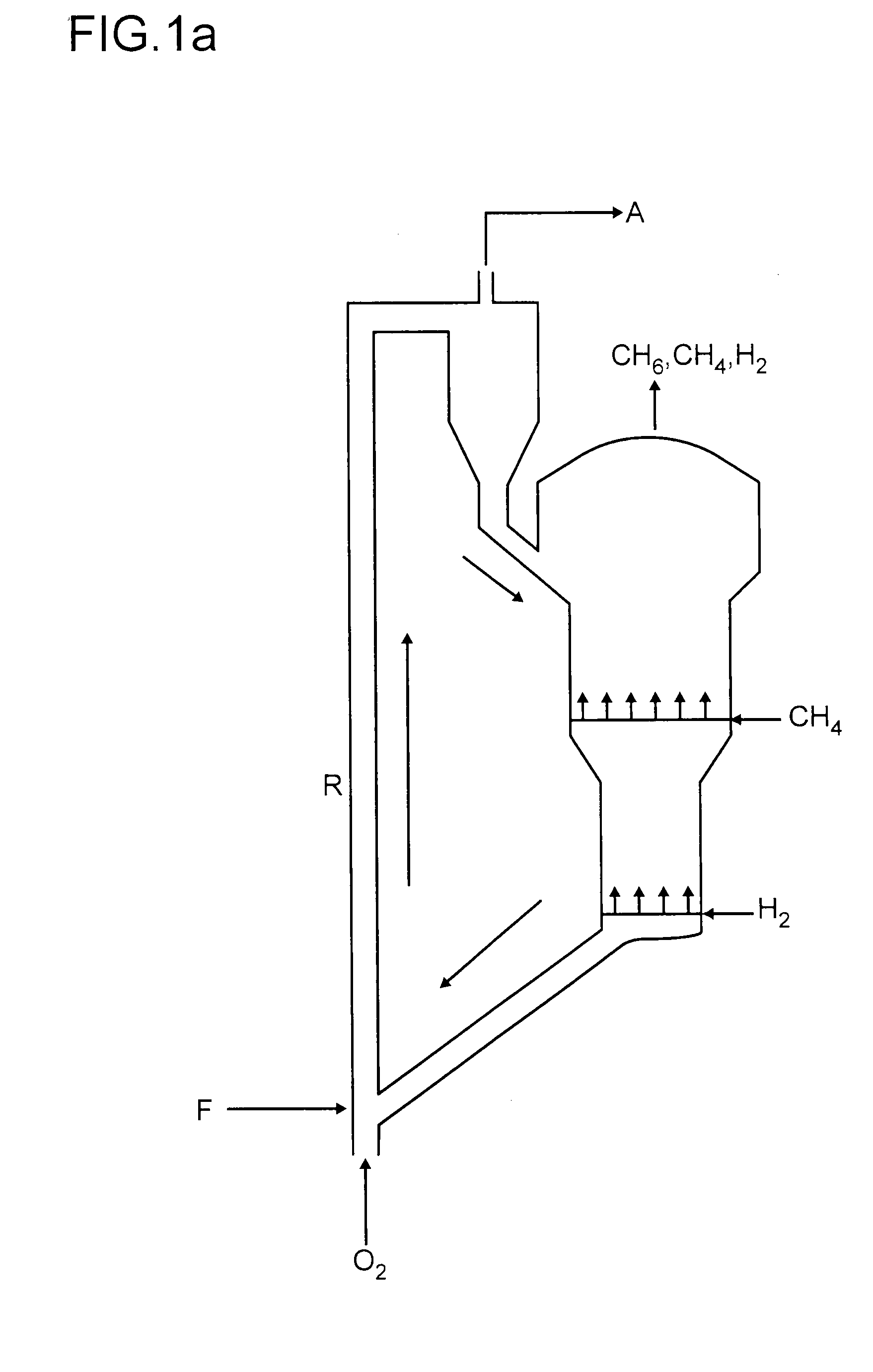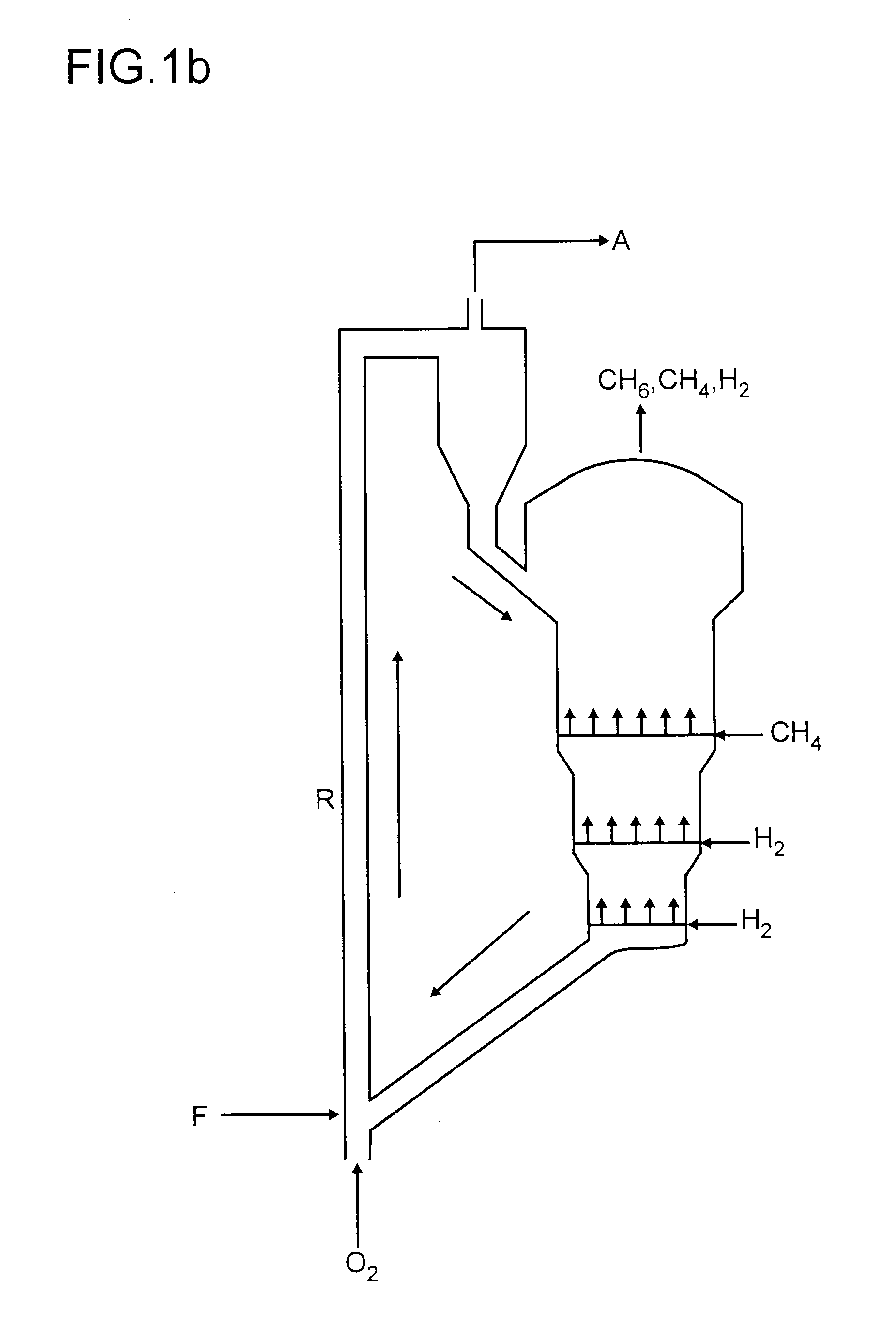Process for preparing aromatics from methane
a technology of aromatics and methane, which is applied in the direction of hydrocarbon preparation catalysts, organic chemistry, chemistry apparatus and processes, etc., can solve the problems of irreversible damage to the catalyst, irreversible damage to the zeolite, and complicated process variants, etc., to reduce mechanical stress on the catalyst particles used, shorten the transport distance of the catalyst particles, and reduce the effect of mechanical stress
- Summary
- Abstract
- Description
- Claims
- Application Information
AI Technical Summary
Benefits of technology
Problems solved by technology
Method used
Image
Examples
example 1
Influence of Water Vapor in the Reaction Gas of the DHAM
[0108]About 1.6 g of the catalyst (6% of Mo, 1% of Ni on an H-ZSM-5 support having an SiO2:Al2O3 ratio of 25) were heated to 500° C. under a helium atmosphere in the reactor tube (internal diameter=4 mm). At this temperature, methane was introduced and the catalyst was maintained at this temperature for 30 minutes before being brought to the reaction temperature of 700° C. under methane comprising 10% by volume of helium. The catalyst was then operated for about 35 hours at 700° C., 1 bar, 10% by volume of He in methane and a GHSV of 500 h−1. During the reaction, the feed gas was passed through a saturator for 180 minutes and 2.8% by volume of water vapor was in this way added to the feed gas mixture. After the reaction, the degree of crystallinity of the ZSM-5 zeolite support was determined by means of X-ray diffraction (XRD) on the catalysts which had been removed from the reactor.
[0109]The benzene selectivities and the measu...
example 2
[0111]Example 2 was carried out using a glass tube having an internal diameter of 40 mm and a total height of about 2.5 m. A glass frit was located at the bottom of the plant and gas was introduced and distributed via this. A pipe running obliquely downward was installed at the side at the lower end of the plant to allow a sample of solid to be taken. Nitrogen was used as fluidizing gas. To minimize electrostatic effects during the experiments, the nitrogen was passed through a wash bottle at room temperature in order to humidify it with a little water.
[0112]As model substance for the catalyst particles, use was made of an aluminum oxide powder (Puralox SCCa 57 / 170, from Sasol) which had been impregnated with an aqueous sodium chloride solution having a concentration of 6 mol / l. The amount of sodium chloride solution corresponded to about 40% by weight of the amount of particles.
[0113]The aluminum oxide content of the particle samples discharged was determined by means of conductivi...
example 2a
Conductivity of the Pure Materials
[0114]
Glass spheres, washed and dried (10 g in 100 ml6-8μS / cmof water):Freshly impregnated Puralox (1 g in 100 ml ofabout 1700μS / cmwater)Unimpregnated Puralox (1 g or 10 g in1μS / cm100 ml of water)Pure deionized water4μS / cmMagnesium silicate:13μS / cm
PUM
| Property | Measurement | Unit |
|---|---|---|
| temperatures | aaaaa | aaaaa |
| size | aaaaa | aaaaa |
| pressure | aaaaa | aaaaa |
Abstract
Description
Claims
Application Information
 Login to View More
Login to View More - R&D
- Intellectual Property
- Life Sciences
- Materials
- Tech Scout
- Unparalleled Data Quality
- Higher Quality Content
- 60% Fewer Hallucinations
Browse by: Latest US Patents, China's latest patents, Technical Efficacy Thesaurus, Application Domain, Technology Topic, Popular Technical Reports.
© 2025 PatSnap. All rights reserved.Legal|Privacy policy|Modern Slavery Act Transparency Statement|Sitemap|About US| Contact US: help@patsnap.com



